Everest is a huge, complex mountain of rock walls, ice and long ridges. The mountain itself straddles the border between Nepal and Tibet, with the north side of the peak occupying the latter and the south the former.
To reach the summit, climbers must navigate a perilous sequence of ridges, faces, icefalls and cols – each with its own place in mountaineering lore.
There are 18 major routes on the mountain, but most summit attempts tackle a handful of infamous landmarks. In this article, Simon Ingram breaks down the anatomy of Everest, the highest mountain in the world.
Everest Base Camp
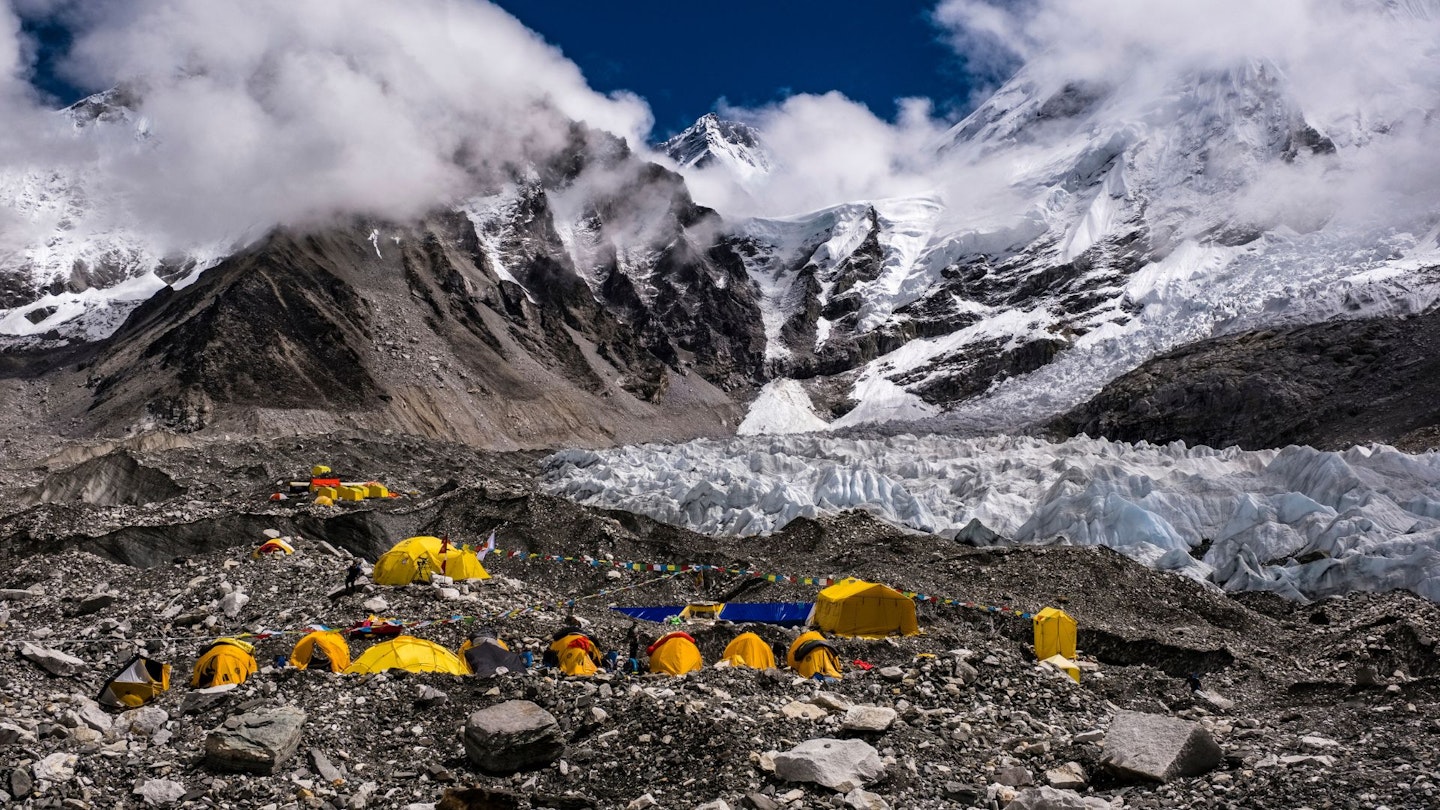
There's a base camp on both the north side of Everest and the south side. The northern one can actually be reached by car and reaches an altitude of 5,200m.
The more popular south side is the one you're probably used to seeing images of, with tents sprawling across the moraine at the base of the Khumbu glacier.
The southern base camp sits at around 5,360m high and houses the majority of permit holders attempting to summit the highest mountain in the world.
Those that don't want to go the whole way can book trekking trips to base camp through companies like Explore Worldwide and G Adventures.
Khumbu Icefall

The notorious, crumbling crevasse-riddled glacier that must be tackled in order to begin an Everest ascent from the Nepal side of the mountain.
This is today accomplished by a system of ladders, though the changing nature of the icefall means new routes must be found almost constantly. Many Sherpas and climbers have died here due to serac (ice column) collapse and crevasses.
Western Cwm
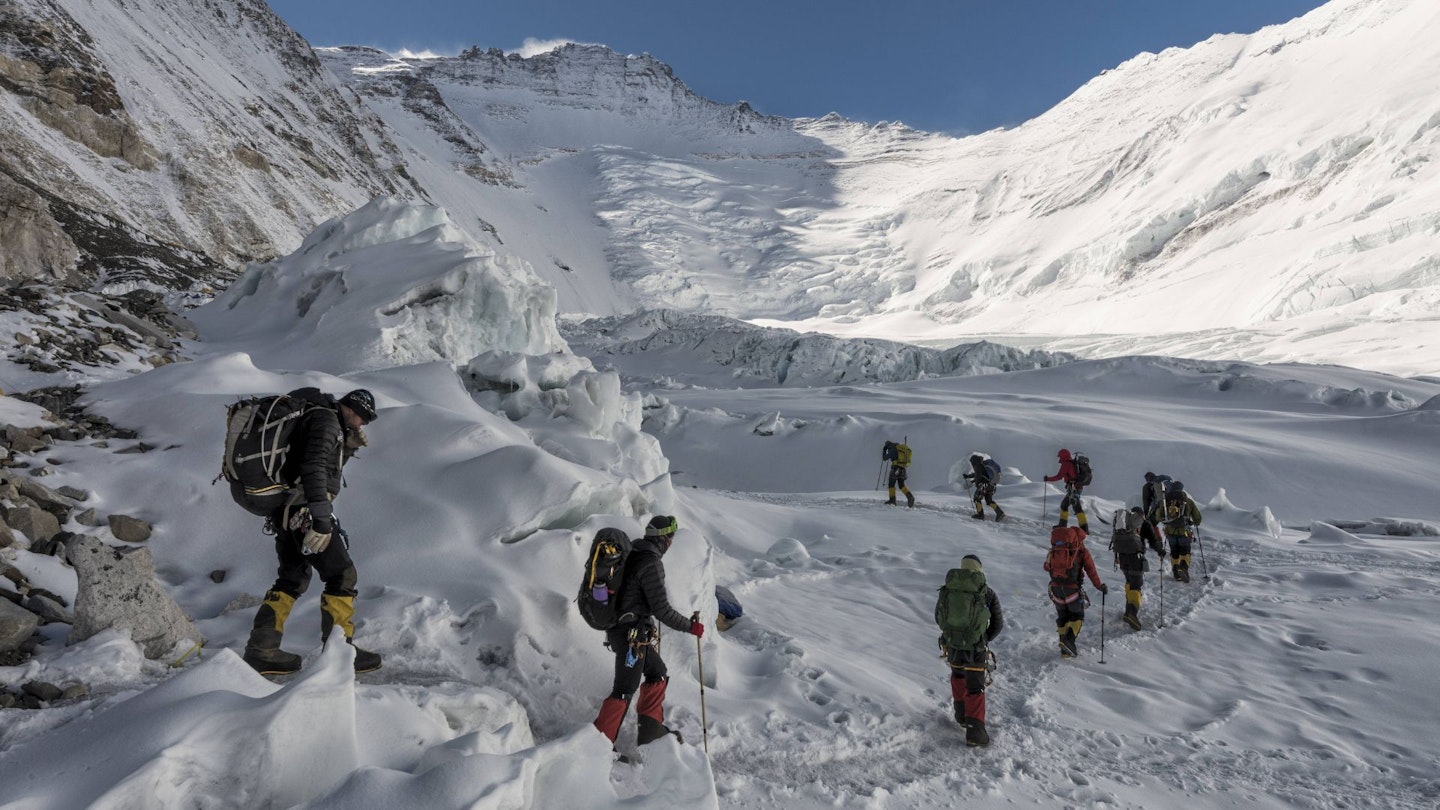
Also known as the Valley of Silence, this is the beautiful, avalanche-scoured valley beyond the Khumbu Icefall beneath Everest’s South-West Face. The name 'Western Cwm' was given to the valley by George Mallory when he first sighted it in 1921.
Lhotse Face
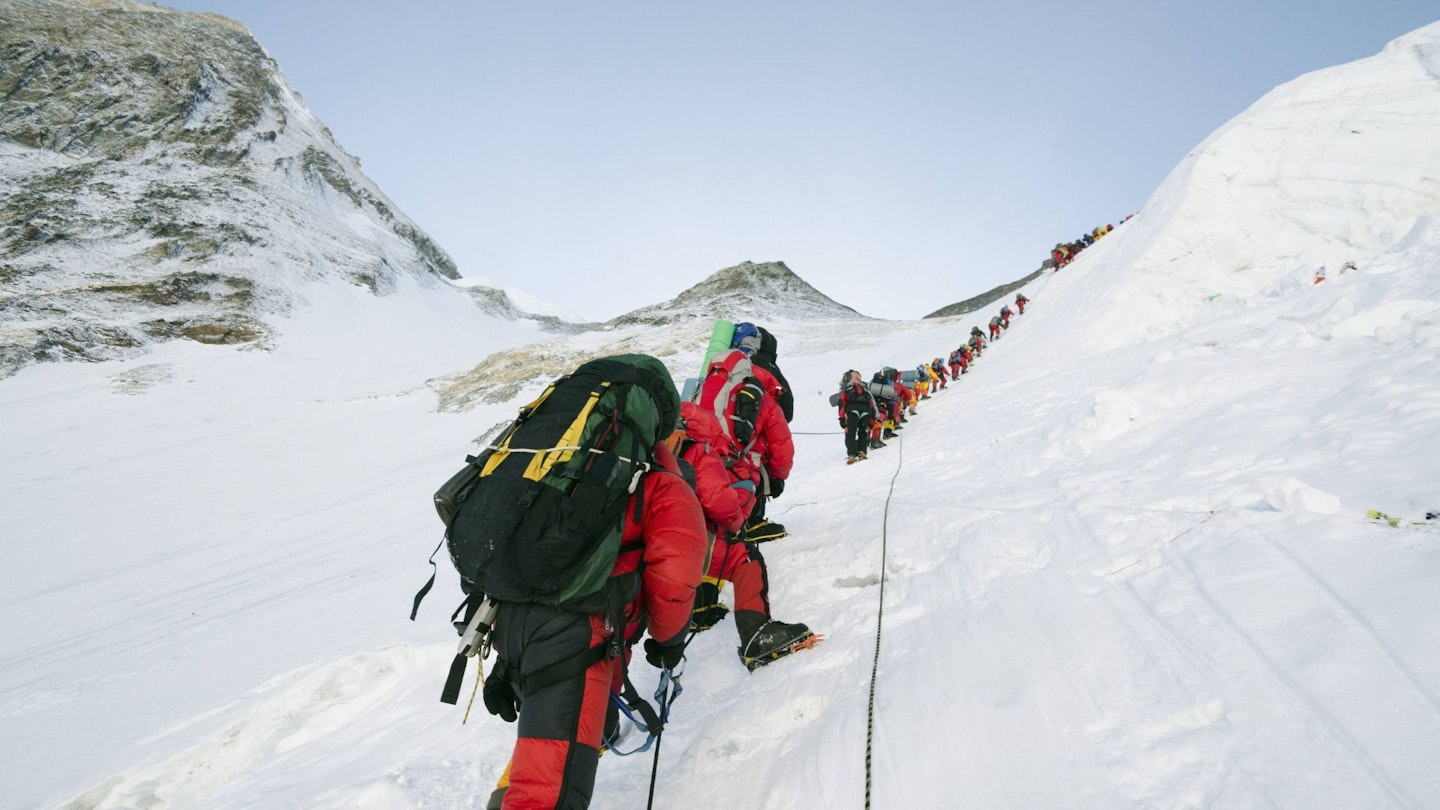
A huge wall of ice and rock, which is the first major ascent on the route from Nepal. Notorious for avalanches, the Lhotse Face leads to the South Col, and is often used in acclimatisation.
South-West Face
Known as the ‘hard side’ of the mountain, the South-West Face was the first face – as opposed to ridge – of the mountain to be climbed, and one of its hardest aspects due to its sustained height and steepness.
South Col
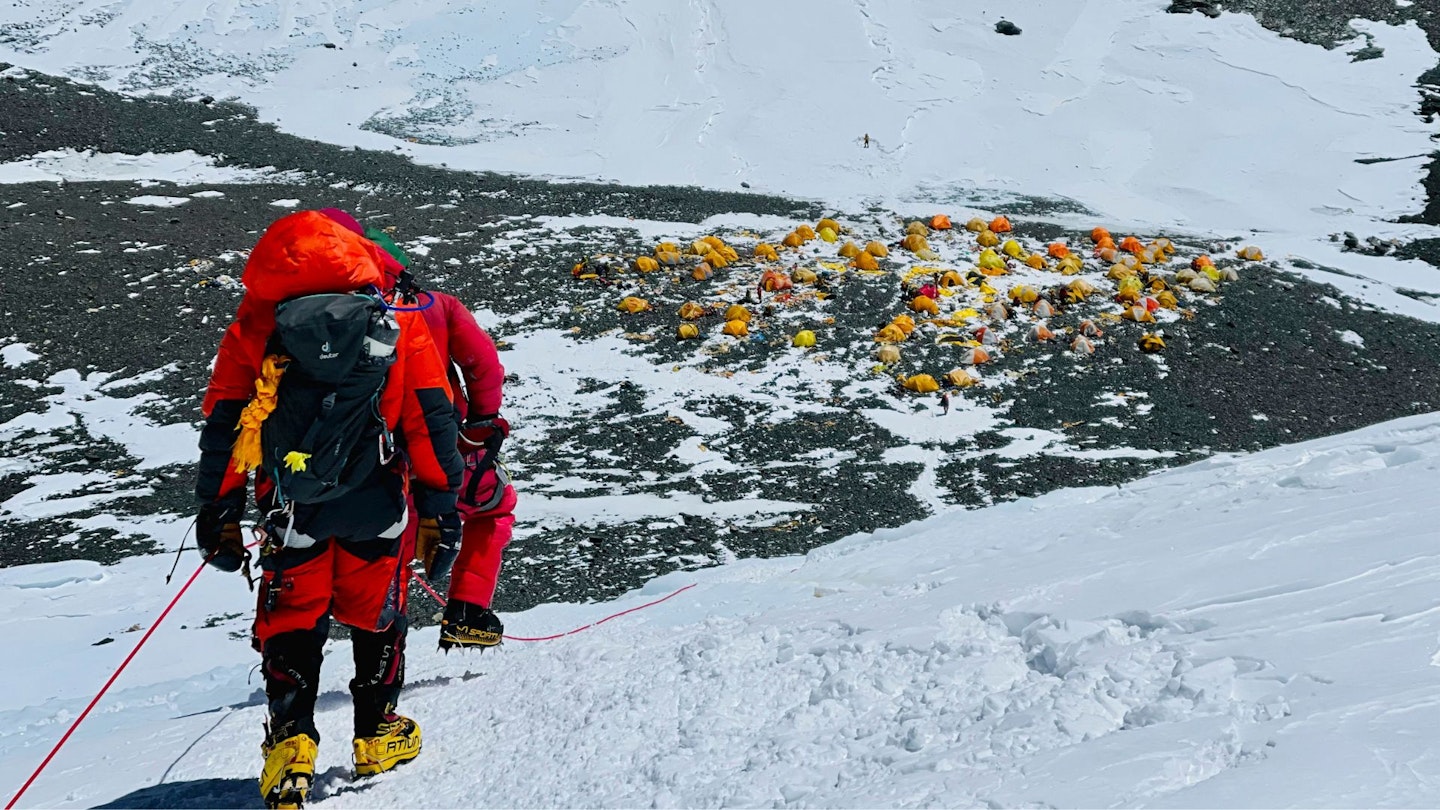
An exposed, windswept notch between Everest and Lhotse, littered with oxygen bottles and ruined tents, this extreme place is a few feet shy of the notorious Death Zone – the region above 8,000m beyond which the human body is unable to acclimatise to the thin air.
Summit assaults are typically launched from this point, and climbers returning from the summit often recuperate here – wrapped up in their down jackets (or summit suits) and thick sleeping bags – before returning to Base Camp.
South-East Ridge
The classic route to the summit of Everest from the South Col in Nepal, used by Edmund Hillary and Tenzing Norgay as part of the successful 1953 team.
Hillary Step
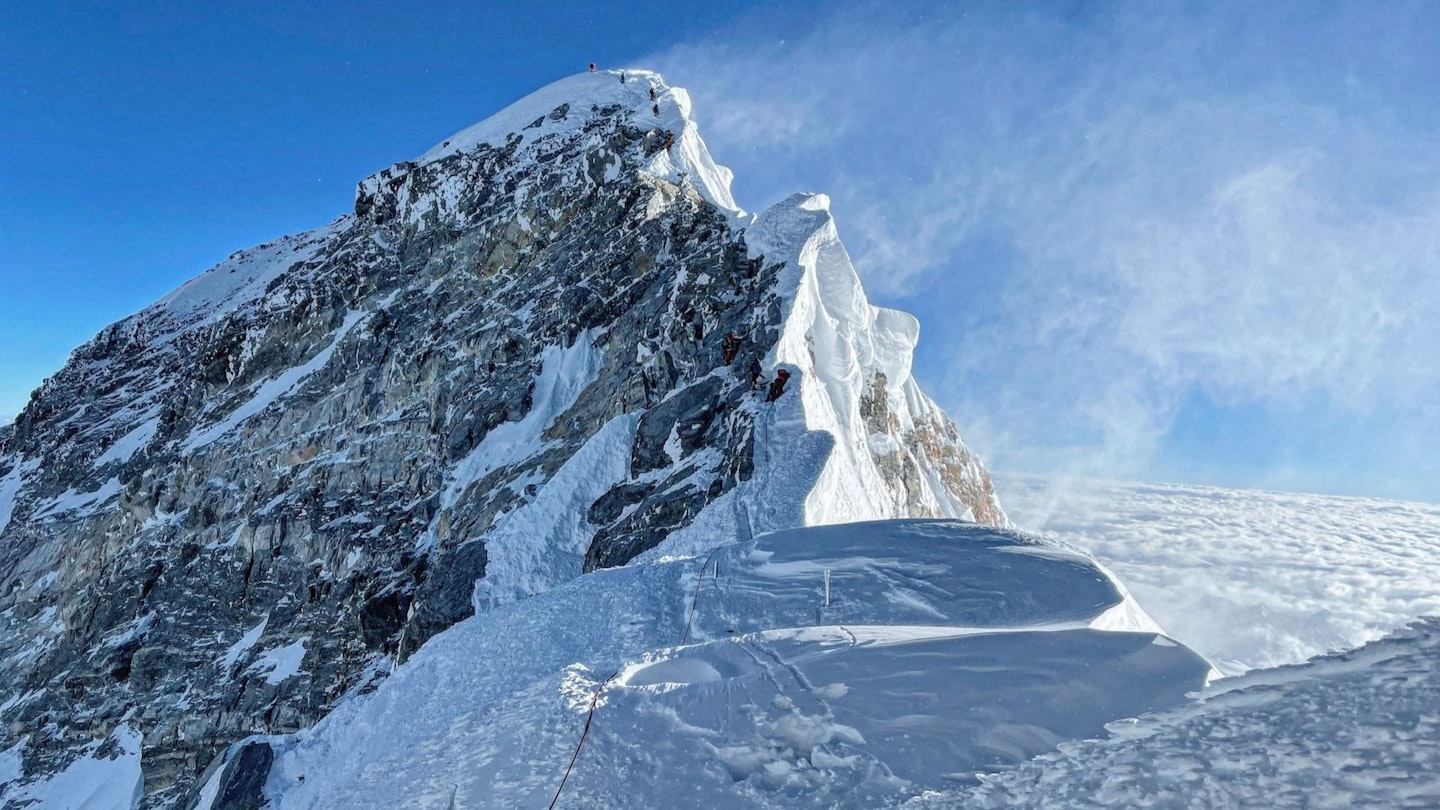
The Hillary Step was a steep 40ft wall of rock and ice encountered on the classic route from Nepal, and it represented the principal physical obstacle to the summit from this direction.
Edmund Hillary memorably described this as "smooth and almost holdless... an interesting Sunday afternoon problem to a group of climbers in the Lake District" but at altitude it proved a much more difficult prospect.
As Hillary was the first person to climb it, the step took his name. However, a large part of the boulder broke away from the mountain in 2017, so the Hillary Step as we once knew it no longer exists and has in large parts been replaced by a steep snow-covered slope.
North Face
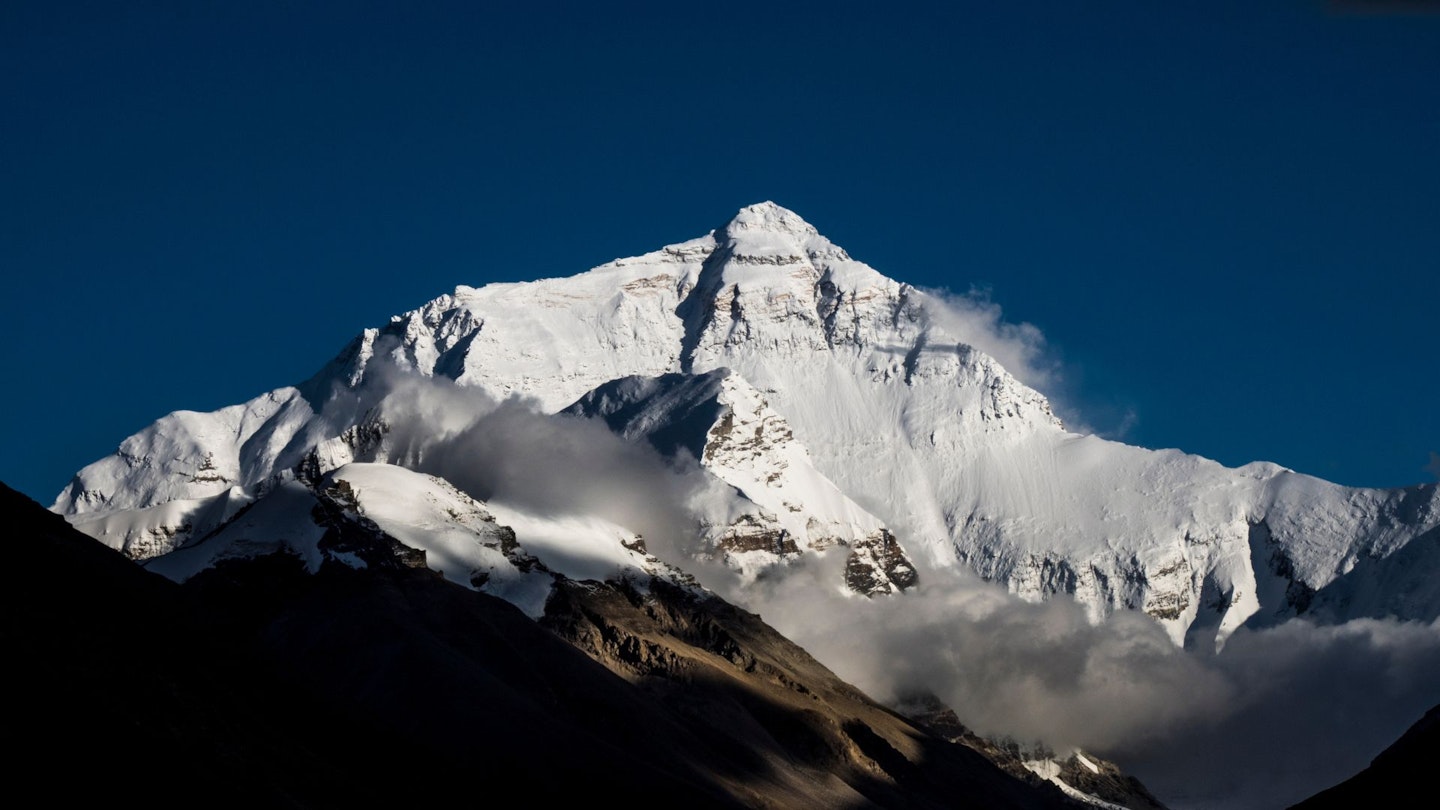
Intensely steep and complex, the North Face of Everest was first climbed fully in 1980 by a Japanese team, and followed shortly afterwards by Reinhold Messner’s astonishing solo and oxygen-free ascent. There are today many variations but it remains formidable and little climbed.
North Col
The first camp on Everest itself for climbers approaching from Tibet.
North Ridge
The route made infamous by Mallory and Irvine, this is today one of the most used ascents on the mountain. Climbed from Tibet, it's considered a more difficult route than the South-East Ridge, though not as aesthetically pleasing.
The main obstacles are three rock steps – the First, Second and Third Steps – which must be overcome in order to reach the summit. The most difficult of these, the Second Step, is today climbed using a ladder permanently lashed to the rock.
Kangshung Face
This is the name given to the east face of Everest, the most remote on the peak. Due to the prevailing winds the top of the face is often heavily corniced (carrying overhanging snow), making it prone to avalanche. Many believe it to be the most dangerous route of ascent.
Summit
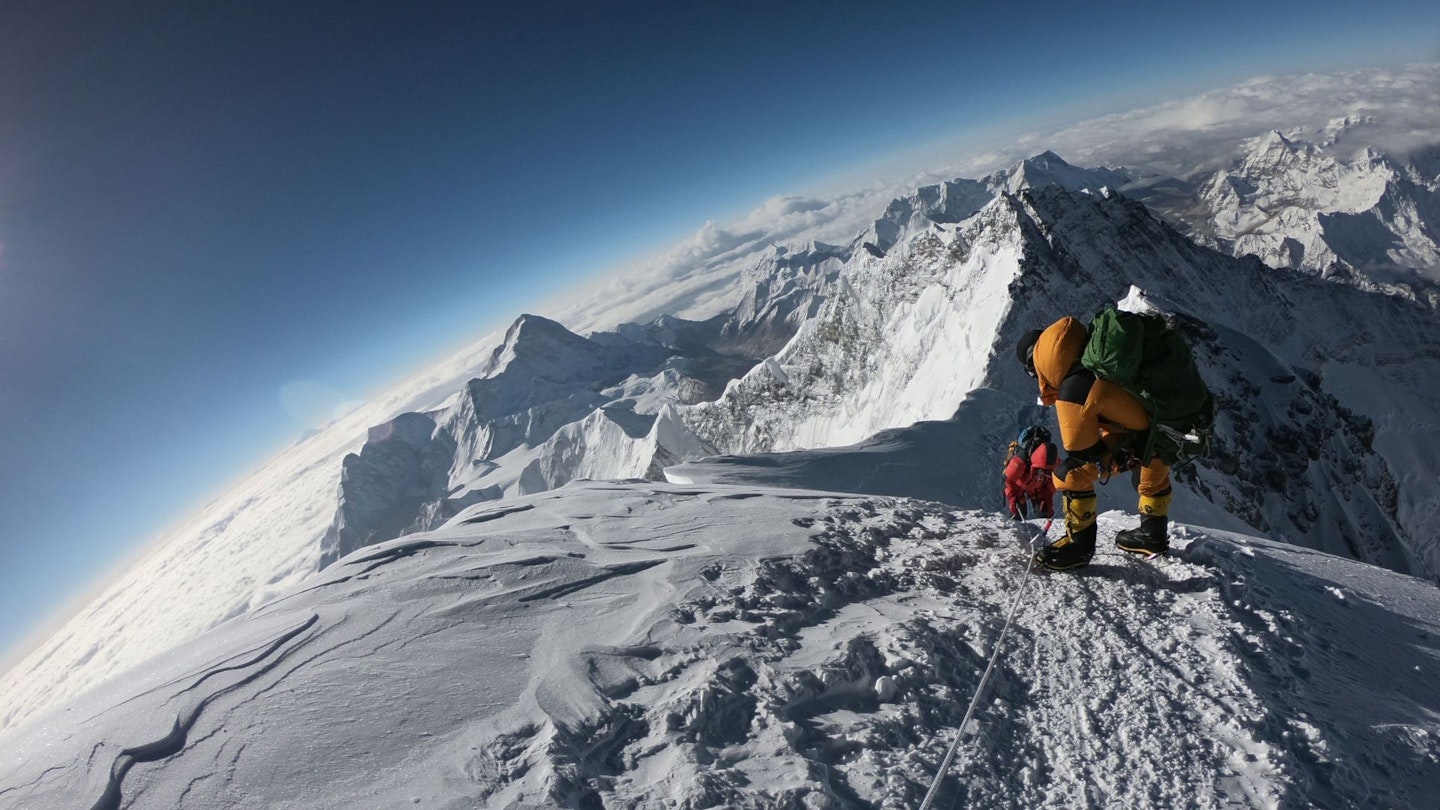
No matter which route you take, the summit (sitting at 8,849m tall) is of course the same for each and every climber. Those climbing from the more popular south side of the mountain approach the true summit via a knife-edge ridge.
The summit itself is a small, snow-covered slice of ground that's strewn with prayer flags. The views, as you might expect from being on top of the world, are vast and expansive.
Many people say that it's at this point where the real challenge begins – descending safely and navigating the often crowded fixed lines as people continue to attempt to make their way to the summit.
